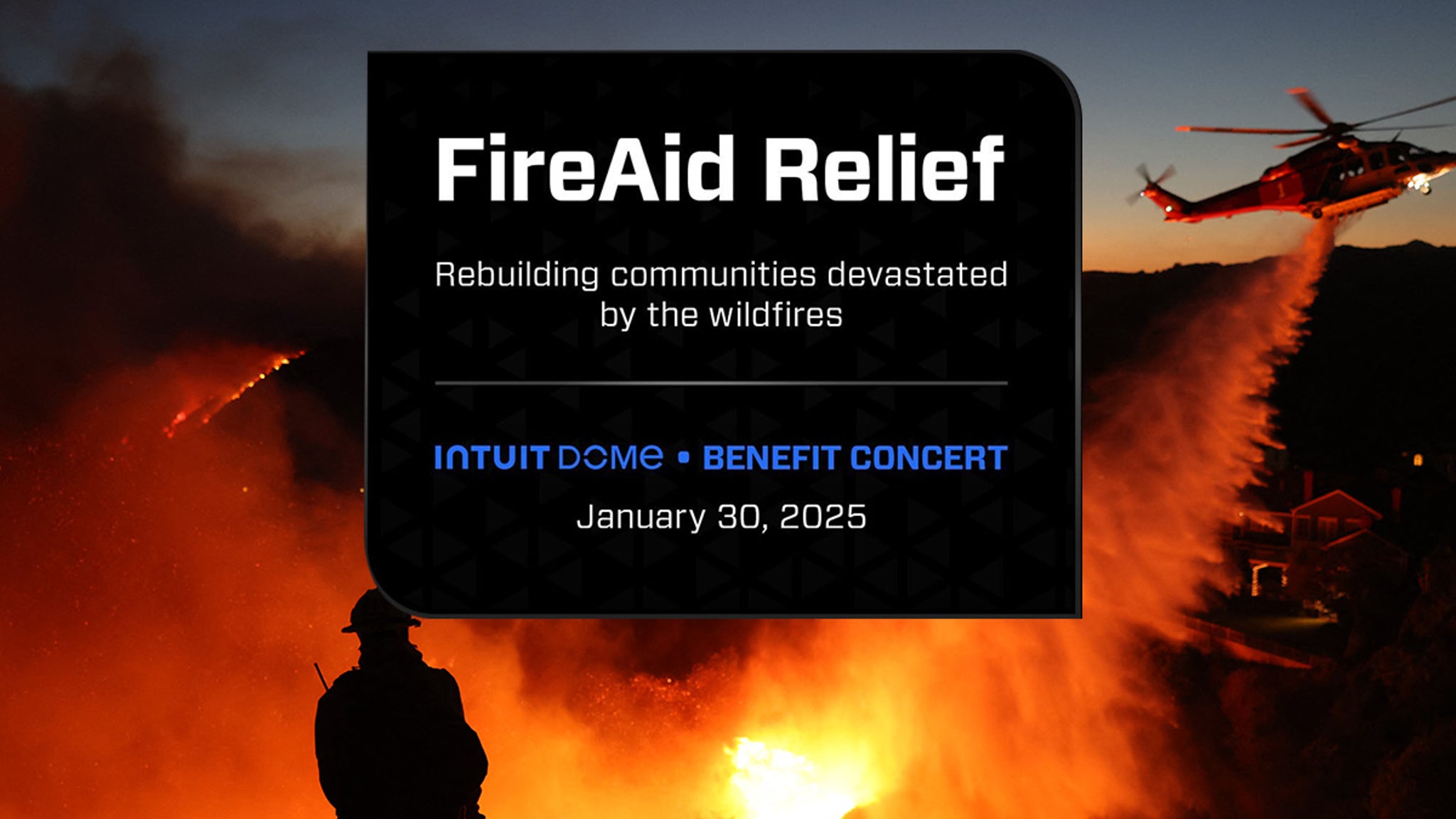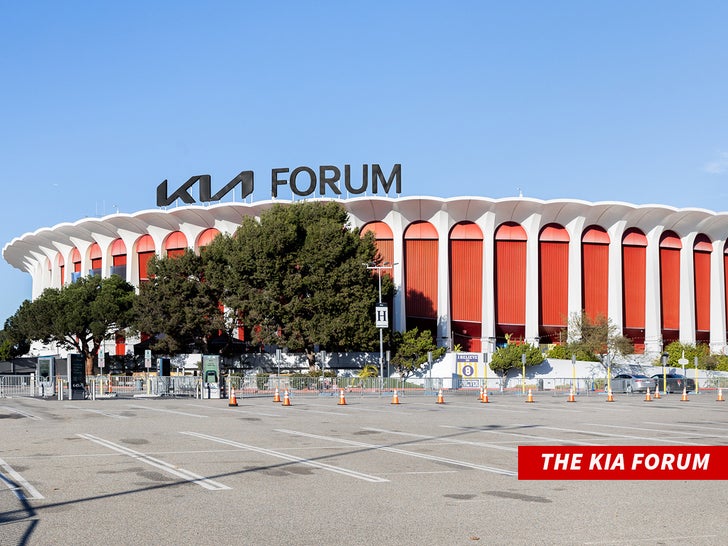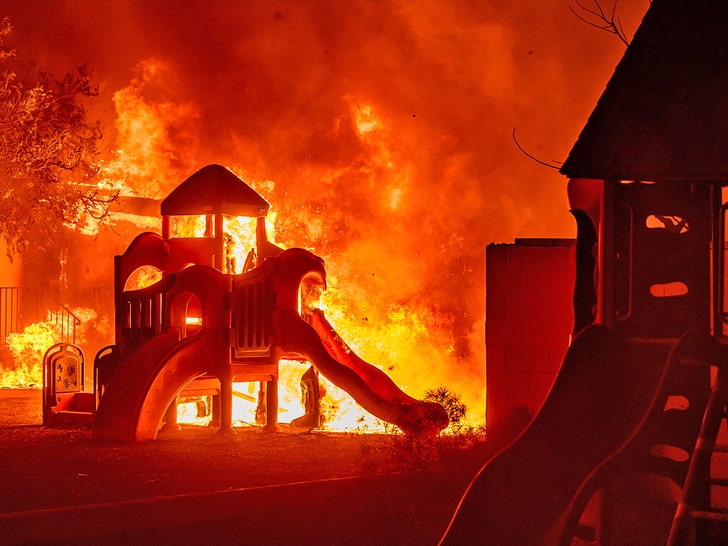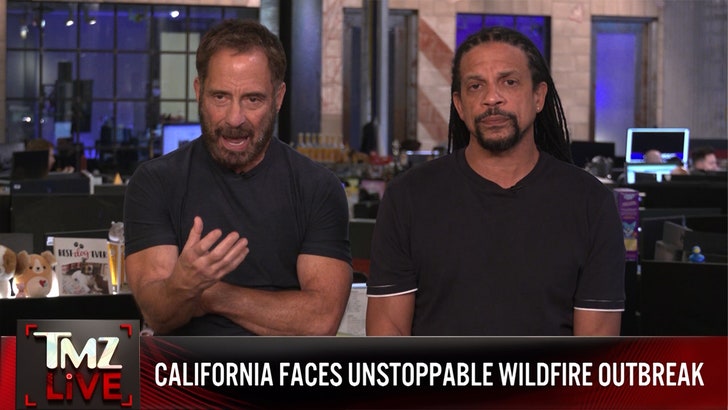Lifestyle
Cabernet is the most popular red wine in the U.S. Can it endure climate change?

Late-summer heat waves are threatening Napa Valley’s famed cabernet grapes, which produce some of the United States’ most expensive wines. To survive in a hotter climate, winemakers are realizing they’ll need to adapt.
Ryan Kellman/NPR
hide caption
toggle caption
Ryan Kellman/NPR
Climate change is affecting our food, and our food is affecting the climate. NPR is dedicating a week to stories and conversations about the search for solutions.
In California’s Napa Valley, cabernet sauvignon is king.
The bold red wine has made the region world famous, with some bottles retailing at hundreds of dollars. But increasingly severe heat waves are taking a toll on the grape variety, especially in late summer during ripening. As temperatures keep rising, the wine industry is slowly confronting a future where Napa may not be the prime cabernet region it once was.
In the face of climate change, wineries around the world are innovating. New technology is being installed to keep the grapes cool during heat spells. A handful of wineries are going a step further. They’re experimenting with new grapes, ripping out high-value cabernet vines to plant varieties from hotter climates.
The goal is to find heat-tolerant grapes that blend well with cabernet, potentially making up for the flavors that cabernet could lack when temperatures get even hotter. While many bottles labeled cabernet are already blended with other grapes in small amounts, winemakers may need more flexibility in the future.

“We know we have to adapt,” says Avery Heelan, a winemaker at Larkmead Vineyards in Calistoga, Calif. “We can’t just pretend that it’s going to go away, because all we see is each year it’s getting more and more extreme.”
Still, blending with other grapes comes with risks. For a U.S. wine to be labeled cabernet, a bottle must contain 75% cabernet grapes or more. Any less, and it’s considered a red blend. Blends typically don’t command the same prices on store shelves as cabernet, especially since consumers are accustomed to picking U.S. wines by the name of the grape. Moving away from cabernet would be a major financial gamble for Napa’s multibillion-dollar wine industry.
“It is a big shift,” says Elisabeth Forrestel, an assistant professor of viticulture and enology at the University of California, Davis. “Without the market changing or demands changing, you can’t convince someone to grow something that doesn’t sell or doesn’t garner the same price.”

University of California, Davis research assistant Jacob Vito crushes cabernet sauvignon grapes from Napa Valley to analyze their chemical compounds. The lab is studying how heat is affecting the grapes.
Ryan Kellman/NPR
hide caption
toggle caption
Ryan Kellman/NPR
Charbono, anyone?
Some grapes growing at Larkmead Vineyards aren’t ones that many American wine drinkers would recognize. Long rows of vines are labeled: touriga nacional, aglianico, charbono and tempranillo.
“There’s not a huge market for a lot of these varieties,” says Heelan, walking among the vines on a hot summer afternoon. “We’re really choosing them not from popularity, but for their qualities.”
Established more than a century ago, the winery is known for its bottles of cabernet sauvignon. These lesser-known grapes were planted only a few years ago, part of a research vineyard that took the place of cabernet vines.
“Which most people would probably think is a little crazy, considering it’s 3 acres of perfect cabernet land,” Heelan says. “But certainly with the climate and how dramatically it’s changed over even the last 10 years, we really have to start adjusting.”

Winemaker Avery Heelan is growing several rare grape varieties at Larkmead Vineyards in Napa Valley, in the hope that they’ll blend well with cabernet grapes as temperatures get hotter.
Ryan Kellman/NPR
hide caption
toggle caption
Ryan Kellman/NPR
The vineyard is already at the hotter northern end of Napa Valley, but the extreme heat in recent years has been a wake-up call. A late-summer heat wave in 2022 hit temperatures just under 120 degrees at the vineyard, she says.
“When it gets that hot, the vines, they’re done,” she says. “They’re going to go dormant, and when that happens, they’re not ripening anymore.”
In extreme heat, cabernet grapes can lose their rich color. They also dehydrate, wrinkling like raisins, which produces wines that are sweeter and more alcoholic. Heelan says the grapes that the vineyard is testing could provide an added boost of color or acidity to cabernet, helping balance out the wine when temperatures take their toll.
The experiment has its cost. In addition to the lost revenue from removing cabernet, grapevines take up to five years to produce their first crop, plus several more years for the wines to ferment. Heelan says only then will they start to see how the new grapes are performing. But the goal is to prepare the winery for the future, knowing that heat will likely get worse.
“Honestly, the more we experiment and learn about how to adapt, I think the wines are just getting better and better,” she says.

In hotter temperatures, cabernet grapes lose their rich red color and produce sweeter, more alcoholic wines.
Ryan Kellman/NPR
hide caption
toggle caption
Ryan Kellman/NPR
Where cabernet is king
Farther south, Shafer Vineyards sits in the heart of Stags Leap, a Napa wine region that’s known for high-end cabernets. Winemaker Elias Fernandez says the grapes benefit from a cool evening breeze that blows in from San Francisco Bay.
This summer, heat has already been a problem. July was the hottest July on record in California. Fernandez points to a grape cluster where small green grapes are nestled among larger purple ones.
“This is effects of the heat,” he says. “It’s not maturing, so this is where you lose some fruit.”

Winemaker Elias Fernandez is installing new technology at Shafer Vineyards in Napa Valley to combat heat waves.
Ryan Kellman/NPR
hide caption
toggle caption
Ryan Kellman/NPR
The damage isn’t too widespread this year, unlike in 2022. But with summers getting more intense, Fernandez says the winery is looking at technology to help the cabernet vines. They’re currently installing misters, which spray water into the air to cool the temperature.
“It’s a constant mist,” he says. “How many of you have been to a party where they have misters? Doesn’t that feel good? Well, that’s what the vines are feeling.”
Still, using extra water is a challenge in drought-prone California, he says. Plus, the water droplets can concentrate the light on the grapes and burn them, so misters must be run until the sun sets to keep the droplets from collecting. But Fernandez says he’s hoping the misting will keep the cabernet vines producing at the highest level.
“I think the first thing we’ll be doing is mitigation, hoping to keep it as the true varietal of Napa Valley,” he says. “That’s what we’re trying to do — is buy time and see what happens with this whole thing.”
For now, he’s not considering planting other grape varieties. With wines that are priced at $100 and up, cabernet is central to their business.
“For me, it’s hard to think that people are just going to throw cabernet out the door and plant something else,” he says. “I really do. It’s the king of the wines of the world.”

To keep producing high-quality cabernets, Napa Valley winemakers may need to blend them with other grapes to balance out the effects of heat. But wines labeled as blends, instead of cabernet, often sell at lower prices.
Ryan Kellman/NPR
hide caption
toggle caption
Ryan Kellman/NPR
Wine regions are shifting

Professor Elisabeth Forrestel is studying how Napa’s wine regions are shifting with climate change.
Ryan Kellman/NPR
hide caption
toggle caption
Ryan Kellman/NPR
Elisabeth Forrestel is one person trying to understand the big swings in the temperature. In her lab at UC Davis, her research team is smashing Napa Valley grapes inside plastic bags. They’ll be analyzed at the molecular level to see how they change during the summer.
Forrestel’s lab is gathering wine grapes from Napa Valley throughout the growing season, along with detailed temperature data, to see how the most crucial compounds for wine are affected by heat. Studies show the average temperature during the last 45 days of the growing season in Napa — when grapes ripen— has already warmed almost 3 degrees Fahrenheit from 1958 to 2016. But it’s the intense heat waves that do the most damage to molecules that produce a wine’s color and aroma.
“When you have these extreme heat events, you can have a lot of impact on the development of that flavor profile,” she says. “If it was just an average change, it would be a lot easier to manage.”
Forrestel is working on updating a central guide for winemaking, known as the Winkler Index. Developed in the 1940s, it shows the ideal locations to grow different varieties of wine grapes, based on how much heat they receive. Napa Valley was originally indexed for cabernet sauvignon, but this could shift as the climate gets hotter.
With cabernet being the world’s most widely grown wine grape, cabernet vines are resilient to different temperatures, Forrestel says. It’s a question of whether Napa winemakers may need new strategies to keep it producing at such a high-quality level. Since grapevines last 50 years or more, winemakers are faced with making planting decisions today that will need to withstand a hotter future.
“Some of the paradigms in what you would plant need to shift,” she says. “People need to have different approaches so there can be more resilience and you can have more options.”

UC Davis research associate Martina Galeano prepares grape samples. Wine grapes need heat for ripening, but too much heat can break down some of the crucial compounds for wine flavor and color.
Ryan Kellman/NPR
hide caption
toggle caption
Ryan Kellman/NPR
Would you pay the same for a blend?
Blending cabernet with other red grapes could be one strategy. But since U.S. regulations require any bottle labeled cabernet to contain 75% cabernet, at some point wineries may be looking at changing their labels to say “red blend.”
“We have a perception that a blend is not as high quality as getting that high-quality cabernet, and they’re not on the same price point, so it is a big shift,” Forrestel says.
The challenge is particular to U.S. winemakers, since many other countries label their wines by region, instead of grape. The famed red wines from Bordeaux in France are already a mix of six grapes, including cabernet, so winemakers have more flexibility. Winemakers there have also struggled with heat, so French authorities recently approved four more red-grape varieties for blending. Since the wines are labeled with Bordeaux, wine drinkers may not even notice the shift.
Wines in the U.S. are generally labeled by the grape variety, a system that was promoted when the domestic wine industry was growing in prominence decades ago. In an effort to compete with wines from Europe, some thought focusing on the grape variety would demystify wines for consumers and show the quality of American wines.
Now, that system may work against them. Cabernet sauvignon is the most popular red wine in the U.S., according to NielsenIQ. So Forrestel says consumers are also part of the solution by creating demand for wines that are better suited for a hotter climate.
“Be open,” she says. “Because I think it’s really easy to walk in and buy what you’re used to. And also, trust what you like and not what you’re told to like.”

Lifestyle
Upcoming Benefit Concert For L.A. Wildfires Gets Overwhelming Response From Artists, Bands

The upcoming benefit concert for Los Angeles wildfire victims will be exciting, engaging and will raise a ton of money … and big-name artists and bands are clamoring for a chance to help out.
TMZ has learned … there’s been an outpouring of interest from musicians who want to get involved … so much so, organizers are expanding the scope of this event.

We’re told more than 50 artists and bands have asked to participate … and right now, there are only 24 slots … though organizers are trying to add slots to accommodate the overwhelming response.
The benefit concert, dubbed FireAid, was first announced as being held at the new Intuit Dome in Inglewood, CA … but our sources say it will also be held at The Forum … which is just down the street. That’s how big this is getting.

We’re told the performances will also be live streamed.
The full lineup is still being finalized and we don’t have any names right now … but we’re told all of the performers are based in Los Angeles.

We do know Taylor Swift and Beyoncé — two of the biggest acts in music — will not be involved … but that’s fair, considering they aren’t really rooted in L.A. despite having homes here.
There’s a huge pool to draw from and this concert is going to be HUGE … and it’s going to help lots of folks who are starting from scratch.
TMZ.com

Thousands have been displaced by the Palisades and Eaton Fires and Los Angeles is now tasked with rebuilding over 12,000 structures lost in the inferno.
People lost their homes, their businesses, their cars and basically all of their possessions in the fire … and the rebuilding effort will be massive.
So too will this benefit concert.
Stay tuned!!!
Lifestyle
A Couple Kisses That Sealed the Deal

When Olivia Christine Snyder-Spak matched with Elias Jeremy Stein on Hinge in September 2021, she was a decade into online dating but had never found an ideal partner. “I had probably gone on at least a few hundred first dates, sometimes even doing two in a day,” she said.
Mr. Stein was less versed in internet matchmaking and had been on only a handful of dates over the previous year. “I wanted a serious relationship and decided to try the online route since meeting people in person during Covid was harder,” he said.
At the time, Mr. Stein, 35, was renting an apartment in Prospect Heights, Brooklyn; Ms. Snyder-Spak, 36, lived on Manhattan’s Lower East Side.
The two exchanged messages for a week about their shared love for cooking classes and art projects and exchanging funny stories. Then, Mr. Stein asked Ms. Snyder-Spak on a mini-golfing date.
When they met, in mid-September, at the Putting Green mini-golf course in Brooklyn, Mr. Stein was struck by Ms. Snyder-Spak’s energy. “She was super cute and seemed bubbly,” he said.
They played golf for an hour, chatting about their backgrounds and professions as they navigated the course. “We laughed a lot because Olivia kept hitting the ball far away from the hole,” Mr. Stein said. “The conversation was so good that I asked her for drinks afterward.”
They walked to the nearby Other Half Brewing, sat outside and continued talking over beers for the next several hours. “We were easy with each other, and it was clear we had clicked,” Mr. Stein said.
Eventually, it started to rain heavily. As they waited for their Uber rides, Mr. Stein asked Ms. Snyder-Spak if he could kiss her. “I said yes, and when he smooched me, it felt like a movie kiss,” she said, describing it as “very romantic.”
They settled into a dating cadence almost immediately, seeing each other several times a week for activities like sushi-making, comedy shows and museums. On Halloween, they went to Green-Wood Cemetery in Brooklyn. “The spookiness of a cemetery seemed fitting, and the fact that Eli felt the same way was a big sign that he was going to be a great teammate, down for whatever,” Ms. Snyder-Spak said.
A vacation to Turks and Caicos Islands in January 2022 solidified their commitment. “Our flight back got canceled because of bad weather and a staffing shortage, and the two we booked after that also got canceled,” Mr. Stein said. “We eventually ended up in Miami and got bumped on our flight home.”
Nevertheless, they had fun. “That’s when I knew that Olivia was the one.”
The experience made Ms. Snyder-Spak “realize that I wanted to do hard things together with Eli forever,” she said.
Mr. Stein grew up in Durham, N.C. He is a product manager on the software development team at Memorial Sloan Kettering in New York and the founder of Admissions Intelligence, a college admissions platform that uses artificial intelligence. He has a bachelor’s degree in international relations from Vassar College.
Ms. Snyder-Spak is from Woodbridge, Conn., and works as the director of nonfiction at the entertainment production company Topic Studios, in New York. She has a bachelor’s degree in film from Dartmouth.
After their Turks and Caicos trip, the couple began spending several nights a week at one of their two apartments. In July 2022, they began renting a place, which they’ve since bought, in Park Slope, Brooklyn.
Their bond grew as they decorated their home and traveled to places like Brazil, Portugal and Costa Rica. “My love for Olivia was getting stronger, and it was the right time to propose,” Mr. Stein said.
[Click here to binge read this week’s featured couples.]
On Dec. 13, 2023, during a nighttime picnic in Prospect Park, Mr. Stein asked Ms. Snyder-Spak to marry him as the Geminids meteor shower brightened the skies. As they kissed after she said yes, they caught a glimpse of a shooting star.
More than a year later, on Dec. 29, they wed on the front stoop of a Park Slope brownstone owned by Rabbi Yael Werber, a friend of the couple and the ceremony’s officiant. Rabbi Werber is affiliated with Congregation Beit Simchat Torah. Afterward, they walked to Mille-Feuille Bakery Cafe in Prospect Heights and indulged in three desserts.
In September, Mr. Stein and Ms. Snyder-Spak had hosted a six-day, pre-wedding celebration in Asheville, N.C., for 140 guests; it included activities such as solving a murder mystery, visiting local breweries and tubing down the French Broad River. The festivities culminated in a symbolic wedding ceremony on Sept. 1 at Yesterday Spaces, an event venue in Leicester, N.C.
“All my online dating before Eli was worth it because I found the guy I was looking for all along,” Ms. Snyder-Spak said. “I remember the hard work, but now everything feels like magic.”
Lifestyle
The Southern California fires have us on the edge of our seat. When can we finally relax?

When our city went up in flames last week, everyone I know in Los Angeles was in emergency mode. Now, as a new week begins, it’s hard to know how to feel.
For those of us living in neighborhoods not decimated by fire, the acute threat seems to have passed, at least for the moment. The skies are blueish and a light breeze is blowing as I write this. There’s ash on the ground, but less of it in the air. Most LAUSD schools have thankfully reopened. Friends and neighbors who left town are trickling back home.
And yet the National Weather Service warned of a “particularly dangerous situation” with wind gusts up to 45 to 70 mph from 4 a.m. Tuesday through 12 p.m. Wednesday for swaths of Los Angeles and Ventura counties. Additional powerful wind events are also expected throughout the week.
“We are not in the clear yet and we must not let our guard down,” Los Angeles Fire Chief Kristin Crowley said at a news conference Monday.
And so, in my house at least, the evacuation bags are still packed and waiting by the door and my phone remains in easy reach at all times. But how much longer do we have to live like this, allowing Watch Duty alerts to interrupt our sleep, poised for flight? When will we stop feeling the threat of fire hanging over our heads? Or has the threat always been there and we’re only now just seeing it?
“The reality check is there will always be events that nature throws at us that, no matter how great our technology, we can’t fight,” said Costas Synolakis, professor of civil and environmental engineering at USC. “We don’t have to live in fear, but this should give us pause about how vulnerable we are.”
A season of high risk
Fire experts say it was the deadly combination of extremely high Santa Ana winds of up to 99 mph and a city that hadn’t seen significant rain in eight months that set the stage for the two most destructive fires in L.A. history: the Palisades fire and the Eaton fire. Collectively they have burned more than 37,000 acres and killed at least 24 people.
“How a fire starts, grows and spreads has a lot to do with wind and rainfall,” said Amanda Stasiewicz, assistant professor of fire policy and management at the University of Oregon. “We had this duality of high risk from drought making things very pro-fire growth and pro-fire proliferation plus fast-moving winds that are going to carry it quickly, make it harder to suppress and challenge firefighter safety.”
The winds may have died down for now, but the dry conditions remain unchanged, making it easy for new fires to break out from a long list of sources. If the underbelly of an overheated car comes in contact with bone-dry vegetation, that can start a fire. If someone accidentally drags a chain behind their truck, unknowingly sending sparks into the air, that too can set our hills ablaze.
“As long as these drought conditions endure, having that go bag packed is not a bad idea,” Stasiewicz said. “If you have a wind event, the opportunity is there to have a fire get bigger, quicker — and larger fires are harder to contain.”
Her advice? Keep an eye on the weather forecast, paying special attention to wind advisories. “It’s a bit of keeping yourself on your toes,” she said.
This ends with rain
Despite the terrifying imagery and intense warnings, keep in mind that the high wind gusts predicted for the coming week are still significantly lower than the howling “Wizard of Oz”-like winds that blew through the city the night our two deadly fires began.
“To be clear, it looks very unlikely that we’ll see strong north winds of anywhere near the magnitude that we did in the beginning of [last] week,” said Daniel Swain, a UCLA climate scientist on a YouTube livestream on Friday.
However, he does not think L.A. is out of the woods yet when it comes to fire risk.
“Relatively strong Santa Ana winds have a cumulative effect on intense drying,” he said. “I call them atmospheric blow-dryer-like winds. The longer they blow, the dryer and more flammable the vegetation becomes.”
According to Swain, the city of L.A. will not truly be able to breathe a collective sigh of relief until we see rain.
“What we really need is an inch or two of rain to truly and finally end fire season in L.A.,” he said. “Until then, any time there are dry windy conditions, we are going to see an additional risk.”
Unfortunately, there is only a slim chance of scattered showers in the forecast for the next two weeks.
“There is a chance we may continue to see fire risk into February or even March,” Swain said.
Facing a new reality
Even with no rain in the forecast, Synolakis, who has studied people’s response to natural disasters like tsunamis, hurricanes and fires across the world, thinks it’s likely that most of us will relax our hyper-vigilant state fairly soon.
“Last week the feeling in my community in Venice was eerily similar to the first few days after 9/11 when people didn’t know if there were going to be more attacks elsewhere in the United States,” he told me. “Hearing helicopters, and seeing these giant plumes of fire increased our uncertainty. People didn’t know if the fire was going to spread all the way down here.”
But as long as the fire plumes continue to clear and evacuation orders continue to be downgraded to warnings or less, he expects people who have not been directly affected by the fires to return to a semblance of normalcy.
“If there is no new flare-up, I think by the weekend people in surrounding communities will take a deep sigh of relief,” he said.
Whether that relief is warranted, however, is worth considering. The feeling of acute threat may have passed, but climate scientists have been warning us for decades that a warming world will be accompanied by more intense weather and more intense fire.
“These fires are entirely unexpected, but this is what I keep telling people about climate change,” Synolakis said. “You are going to have more events that are unexpected, and you are not going to be able to deal with them.”
-

 Health1 week ago
Health1 week agoOzempic ‘microdosing’ is the new weight-loss trend: Should you try it?
-
/cdn.vox-cdn.com/uploads/chorus_asset/file/25822586/STK169_ZUCKERBERG_MAGA_STKS491_CVIRGINIA_A.jpg)
/cdn.vox-cdn.com/uploads/chorus_asset/file/25822586/STK169_ZUCKERBERG_MAGA_STKS491_CVIRGINIA_A.jpg) Technology6 days ago
Technology6 days agoMeta is highlighting a splintering global approach to online speech
-

 Science3 days ago
Science3 days agoMetro will offer free rides in L.A. through Sunday due to fires
-
/cdn.vox-cdn.com/uploads/chorus_asset/file/25821992/videoframe_720397.png)
/cdn.vox-cdn.com/uploads/chorus_asset/file/25821992/videoframe_720397.png) Technology7 days ago
Technology7 days agoLas Vegas police release ChatGPT logs from the suspect in the Cybertruck explosion
-

 Movie Reviews1 week ago
Movie Reviews1 week ago‘How to Make Millions Before Grandma Dies’ Review: Thai Oscar Entry Is a Disarmingly Sentimental Tear-Jerker
-

 Health1 week ago
Health1 week agoMichael J. Fox honored with Presidential Medal of Freedom for Parkinson’s research efforts
-

 Movie Reviews1 week ago
Movie Reviews1 week agoMovie Review: Millennials try to buy-in or opt-out of the “American Meltdown”
-

 News7 days ago
News7 days agoPhotos: Pacific Palisades Wildfire Engulfs Homes in an L.A. Neighborhood














